In the months following the attacks on oil tankers in the Persian Gulf, energy supply routes and transit security issues have attracted the attention of the major energy-consuming countries and most global powers. Any insecurity along this critical energy transit route is bound to have a direct impact on the energy security of major energy-consuming countries. On the other hand, China, as one of the major economic powers and energy consumers importing from the region, is not satisfied with the US having direct control of its energy transit routes. After the attack on several oil tankers in the Persian Gulf last summer, the country began to step in to help prevent tensions from rising even further in the region. China, Iran and Russia already face US sanctions over disputes around the issue. Increased US sanctions have served to ratchet up tensions to a military level, forcing all three countries to extend their military capability, coordination and reach.
IRAN
After sanctions were applied and Iranian oil exports reduced, Iranian officials, especially President Hassan Rouhani, have consistently stressed that there is no reason why the rest of the region should be allowed to export oil from the Strait of Hormuz while Iran cannot. To demonstrate its presence and authority at the regional level, Iran has been conducting military exercises with regional forces in international waters for the past few months.
In August 2018, Iran held an important naval exercise. The exercise was intended to show that it has the power to close the Strait of Hormuz altogether if need be. The naval drill came months after the US withdrew from the JCPoA and imposed sanctions on Iranian oil exports. Given the gradual decline in Iran’s oil sales, the naval drill was a warning to the US and everyone importing oil through the strait. Last September, Iran’s Head of General Staff, Director of International Relations and one of the country’s top diplomats stated that Iran was launching a joint naval drill with several other countries. The Islamic Republic also secured agreements which included trilateral talks with Russia and China as the two major powers in the north Indian Ocean and the Arabian Sea. According to General Ghadir Nezam, Iran has no plans for a naval drill in the Persian Gulf involving China or Russia.
Iran’s enemies accuse it of “increasing the security of international trade in the region.” According to Iranian military spokesman Gen. Abolfazl Shekari, however, the main purpose of Iran’s naval exercises is “strengthening and enhancing the international trade security of the country,” as well as “exchanging of experience” between the three countries and “fighting terrorism and piracy.” Another purpose of the exercise is gaining experience in the field of rescue operations and sharing them.
#Photos: Press conference on joint Chinese-Iranian-Russian naval drill#Iran #Russia #China #IranNavy #IranMilitary #IranDefence #IndianOceanhttps://t.co/DSkrFwtQhQ pic.twitter.com/W9quYl4mnK
— Iran's Today (@Iran) December 27, 2019
RUSSIA
Having played an active role in the Syrian crisis, Russia is now trying to increase its influence and presence in the Middle East. The US Senate has approved plans to punish companies playing an active role in some of the on-going large scale international Russian energy projects. Russian-American competition in the global energy market is increasing day by day. Reducing Russia’s share of EU energy exports to the EU market is America’s main goal.
???? #Live: FM Sergey #Lavrov gives speech at the 16th Annual Meeting of the #Valdai Discussion Club, session 'Middle East in the General Context of #Russia’s Policy.' #ValdaiClub #Sochi #Diplomacy https://t.co/qwqrfO9Krj
— MFA Russia ???????? (@mfa_russia) October 2, 2019
Russia has been planning to foster Iranian-Chinese partnership for months. A few months ago while giving a speech at the Valdai Discussion Club, Russian Foreign Minister Sergey Lavrov drew attention to the ongoing cooperation in the fight against terrorism with Iran and Russia’s cooperation with China in preparation for upcoming anti-terrorism military exercises. According to Lavrov, the region is a “high-risk area” and the international community should pay more attention to Iran’s offer of peace in the Persian Gulf.
#Iran-Russia-China naval drill wraps up https://t.co/Nw4U7LLAVJ pic.twitter.com/FXCU4d0peb
— IRNA News Agency (@IrnaEnglish) December 29, 2019
CHINA
China imports more oil from the Persian Gulf than most other world powers. For this reason, some military experts believe that the Chinese Navy may extend its presence off the coast of Africa to the Indian Ocean and the Strait of Hormuz. The presence and investment of Chinese companies in regions where the country imports energy is at the center of the country’s energy policy. The Chinese-American trade war gave Iran a good opportunity to export oil on the grey market. China wants to hold more ground in the region and play a role in regional equations, especially in energy security along the energy transit route. According to director and spokesman of the Information Bureau of the Ministry of National Defense of the People’s Republic of China, Wu Qian, China’s goal is to increase the level of cooperation between Iran, Russia and China.
https://twitter.com/RobertJSomynne/status/1210242539166601221
It is worth keeping in mind that China carried out a joint military exercise with Saudi Arabia on November 9 in the Red Sea port of Jeddah with the goal of fighting “terrorism and piracy.” Two years ago, Iran and China conducted another one-day joint exercise in the eastern part of the Strait of Hormuz. Approximately 700 Iranian and 700 Chinese soldiers participated in the exercise. China maintains relations with Iran and Saudi Arabia, and is trying to reduce tensions between the two countries and the entire region.
US’ MARITIME COALITION
China has continued to import oil from Iran since July in spite of US sanctions. Tehran will play an important role in the strategic design of Beijing’s Belt and Road project. In 2016, the two countries decided to expand their defense ties. Iran’s foreign minister went to Beijing in August this year to discuss the strategic relations. The concept of collective security in the Persian Gulf was introduced by Moscow in July of this year as well. Moscow called for an international conference on security and investment in the Gulf. The ultimate goal of the conference will be to design a new security framework for the region.
Following the destruction of a US drone by Iran’s powerful anti-air missile system, the US decided to establish a maritime alliance aimed at ensuring the passage of commercial ships in the Strait of Hormuz and the Persian Gulf. The United States has invited many countries to join this Maritime Coalition. Countries such as Germany and Japan responded negatively to the US’ demand, while Britain, Bahrain and Australia agreed to join.
UK to form maritime coalition with the US in the Gulf amid growing tensions with Iran | @HarryYorke1https://t.co/krQZi4ZrTT
— The Telegraph (@Telegraph) August 5, 2019
Issues related to the balance of power in the region have been the focus of regional and international powers for some time. The United States does not seem to have a proper motive for establishing itself in the region, mostly seeming interested in observing and checking the growing power of Russia and China in the Middle East. The Iran-Russia-China naval drill may be the start of a shift in international relations, but who stands to benefit the most from the shift in power? Given the level of trade between Iran and Russia, it appears that Iran, Russia and China have benefited the most from their trade and political relations with Iran. Moreover, this trend is expected to continue in the future. While Japan refused to join the US-initiated Multinational Gulf Ship Protection Force, the country did say it plans to take independent action. The Japanese government also announced that a warship will soon be sent out alongside two patrol aircrafts in order to “gather intelligence” and “protect Japanese ships.”
The Japanese government approved the deployment of patrols and warships to the Middle East and the Arabian Sea. The cabinet secretary announced at a recent meeting that the cabinet had decided to use warships and patrols starting early next year to protect freedom of transport in the region. The Japanese constitution emphasizes that the country refuses to participate in military operations abroad and that the deployment of military units abroad is considered a sensitive issue. Previously, the US and numerous European countries declared various maritime alliances to protect freedom of transport in the Persian Gulf and Strait of Hormuz.
DRONE ATTACKS HIT AN ARAMCO REFINERY
The drone attacks which destroyed much of an Aramco oil refinery facility in Saudi Arabia and the drop in production and exports that resulted led to the US’ making a decision to send thousands more troops to Saudi Arabia. In September, the US sent 4,000 troops along with Patriot missile systems to contribute to the protection of Saudi energy infrastructure. In October, the country decided to send thousands more soldiers to Saudi Arabia at the request of Saudi crown prince bin Salman.
https://twitter.com/ahmed/status/1177309717925961730
US’ REACTION TO THE IRAN-RUSSIA-CHINA NAVAL DRILL
Pentagon spokesman Sean Robertson said “we are aware and watching multilateral naval drill between Iran, China and Russia; we will continue to work with our partners and allies to ensure freedom of navigation and free trade on international waterways.”
One of the aims of the naval drill is undoubtedly to show the level of coordination and support between Moscow, Beijing and Tehran. Iran has been under heavy pressure from the US over the past year, which has pushed its enemies closer together.
There are various important factors in establishing this interregional alliance from an inter-ethnic perspective. The coalition is primarily the result of Chinese and Russian interests in the Persian Gulf. Given the US-China trade war and Washington’s ongoing turmoil with Russia, there is strong incentive for China and Russia to rally with Iran, given the Islamic Republic’s strategic position in the region. The two countries have achieved positive results which have motivated them to participate in other regional issues. They have both earned a strong base in the Persian Gulf and fostered collective security there and in the Middle East with Iran’s assistance.
Both countries have strong incentives to form a sturdy coalition with Iran, particularly the Russians who have suffered numerous sanctions and conflicts with the Americans and Europeans following the situation in Crimea. The Chinese have also been attacked by Washington as a result of their historic rivalry, pushing China to further secure relations with the Islamic Republic.
This Iran-China-Russia coalition is almost certainly bound to manifest in the coming year. Joint patrols between Russia and China in the waters of Japan and South Korea in the East China Sea reinforce the possibility of their becoming partners in the region.







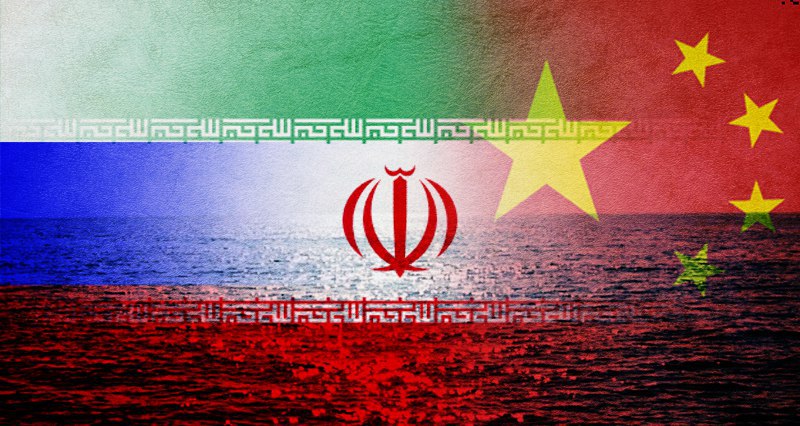

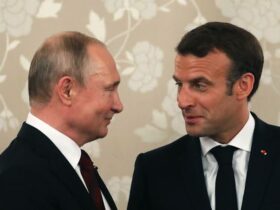
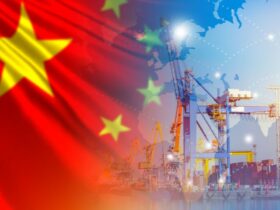

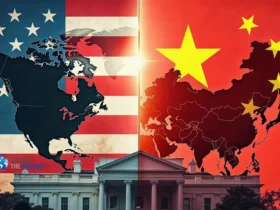
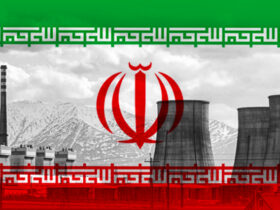
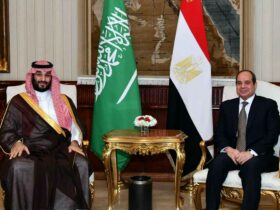


Leave a Reply